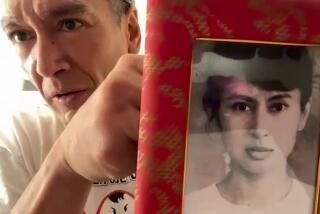This Doctor’s Prescription: Revolution
- Share via
The button pinned to Dr. Aungkhin Aungkhin’s tie announced his passion: “Free Burma.”
“Burma is my life,” said the 55-year-old chairman of the Committee for Restoration of Democracy in Burma, West Coast branch. “I live and work just to support the revolution; that is my purpose.”
His words were not rhetoric. Aungkhin said he considers his jobs--senior psychiatrist at the California Institution for Men in Chino and a part-time counselor at the Special Clinic in Long Beach for Southeast Asian Refugees--solely a medium to help finance the Burmese revolution which began in 1988.
“I’m familiar with my job, and that’s all that it is, a job, a means to enable me to support the revolution,” said Aungkhin, who left Burma, now known as Myanmar, in 1976. “I wish I didn’t have to work so I could spend every day writing newsletters and telling people about the bloody rebellion that’s going on at home.”
Aungkhin’s commitment to restoring democracy, which ended in a military coup in 1962, is such that he does not tolerate those not likewise committed.
Several years back “I divorced my wife because she wasn’t a patriot,” he said. “She said I was spending too much time on Burma, and I just divorced her.”
Recently, Aungkhin said, he punched a former countryman who mocked his ideas. Too many Burmese-Americans, he said, are more concerned with their new lives in the United States than with the revolution.
“Maybe only 1% of them supports us,” he said angrily. “And, it’s a shame on them.”
Aungkhin has siphoned medical news to revolutionary physicians via underground channels. He works with his committee to send medical supplies to the revolutionaries. His vacation is spent hidden in war camps in the dark jungles of Burma, treating the wounded rebels.
“I’ve seen with my own eyes the people and how they’re suffering . . . how they are struggling for existence,” Aungkhin said. “I saw so many students that were killed because of starvation, and I wish I could do more. One died in my arms, and I buried him.”
His house reflects his obsession. In his living room, furniture is pushed back to accommodate display boards laden with newspaper articles and photographs of Burmese casualties. His bookshelves are filed with Burmese history texts and periodicals. His dining table is covered with newsletters and magazines about the revolution.
He writes with pens that advertise the committee and drinks coffee from cups that read “Free Burma.”
And, on some of his Sundays off, he dons his “Free Burma” T-shirt and goes to a Los Angeles monastery where he spends the day talking about the revolution and what Burmese nationals can do to help.
“On most occasions, I’m alone and no one around there (listens to) me,” he said. “I feel upset, but I don’t want to get disheartened. I’ll continue to fight.”
More to Read
Sign up for Essential California
The most important California stories and recommendations in your inbox every morning.
You may occasionally receive promotional content from the Los Angeles Times.













